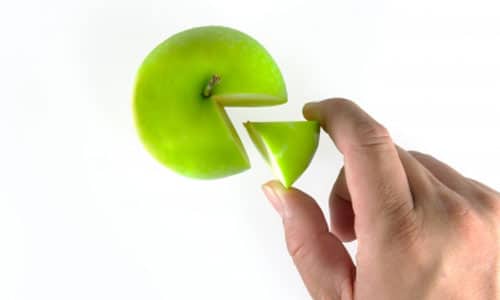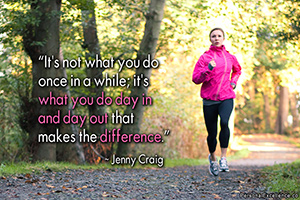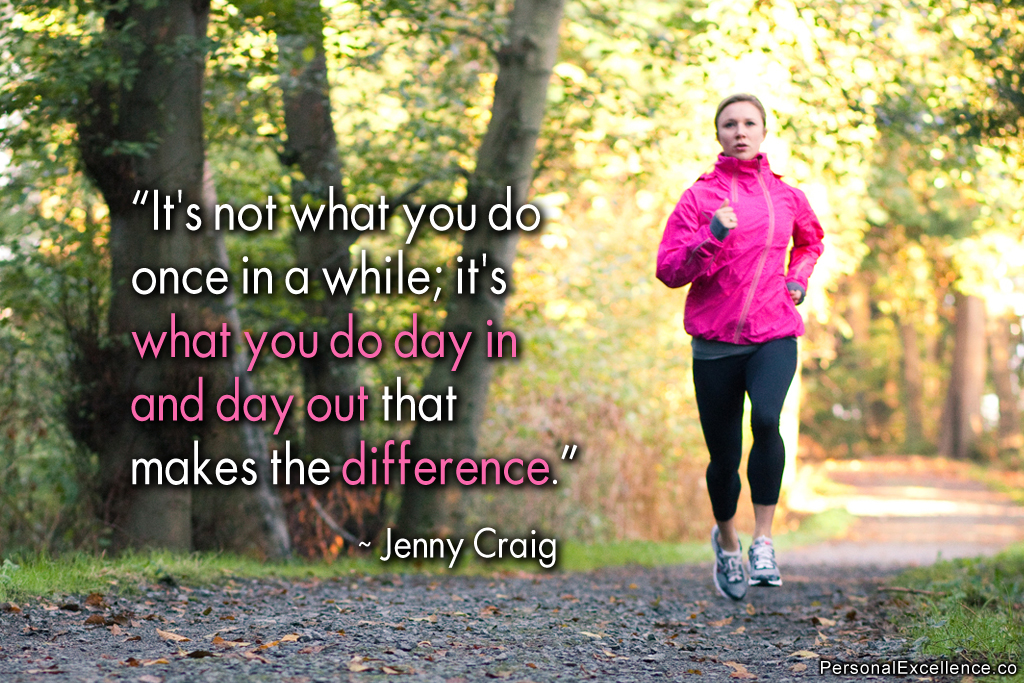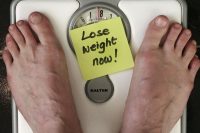This is part 1 of the 2-part series on how to get a six pack and a guest post by Alexander Heyne of Modern Health Monk.

(Image)
That elusive six pack.
The dream of every dieter.
The focus of every health and fitness magazine.
Judging by how often I see “get ripped abs” on magazines every day at the supermarket, It’s safe to say we’re obsessed with a tight midsection.
Unfortunately, because there’s such a strong emotional pull to getting a six pack, this is often where a lot of scam artists come in and try to sell you their products.
Most of the time they don’t work. Sometimes, they’re harmful to your health.
Just last year, there were commercials on TV for a “new, revolutionary weight loss product” called Hydroxycut. It gave you the typical fat loss promises, the typical “get slim, quick” type sales pitch, and then featured cheesy testimonials, before/after images, etc.
Six months later, there were news commercials talking about how Hydroxycut got recalled because of potentially severe health side effects and at least one death.
And guess what? A year later the “new, improved, safe” Hydroxycut entered the market.
It’s just this terrifying cycle pulling on the emotional mind of consumers, something that is generating billions of dollars in totally useless diet products.
Unfortunately, there are very few people that have a six pack that A. Know what they did to get it, B. Know what they’re talking about and, C. Have no interest in selling you a diet pill.
So Celes and I figured this would be an awesome topic to cover – and one that’s shrouded in lots of mystery!
So, let’s jump in and talk about what it really entails!
The Key Factors on Getting a Six Pack

Hi PE Readers ! No tricks, no gimmicks, and I don’t do ab exercises. This is what I look like 365 days of the year – this is not a “post workout” glamor shot with tricky camera angles or perfect lighting or anything.
Alright, there are five key factors on getting a six pack (or getting those Victoria secret abs, if that’s what you ladies are looking for!)
- Genetics
- Diet
- Exercise
- Sleep
- Stress
We’ll go into each of these in much more detail along the series — but for this post, we’ll focus on diet because it’s the most important.
1. Genetics
My young sister is friends with two models – and they eat junk food like McDonald’s almost every day, but stay thin.
They have genetics that allow them to remain thin and not gain too much fat when they overeat. That is not something they can control. And neither can you.
Your genetics will determine a couple factors:
- Where fat accumulates, and how much
- How much your body tolerates carbohydrates, and what effect overeating has on your physiology
- How much muscle you can build, and how easily
- … And many other things
So, for those of you with skinny genetics, (“ectomorphs”) it’s easier to stay lean, but much harder to gain muscle.
It also means you can get away with overeating or generally can eat a higher amount of carbohydrates without gaining as much weight.
For people with “larger” genetics, (“endomorphs”), you are naturally more muscular and bigger, but have a harder time losing weight or belly fat. These people generally need to watch their eating habits more closely, and will gain weight easier than a skinny person.
Chances are, you already know what body type you have. You know because you’ve probably been skinny or a bit bigger your entire life. You also probably already know what type of genetic fat accumulation patterns your body has.
For example, a close female friend of mine gains weight only in her butt and legs. If she gains weight or over eats, it just goes there, and nowhere else.
I thought it was the strangest thing until I met her mom – and I realized the exact same thing going on. Genetics has a large part in fat accumulation (where/how much). However, having certain genetics does not mean you cannot change your outward appearance.
2. Diet
Diet is what we’re going to talk about today, because it’s going to account for virtually all of your success.
Let me let that sink in: getting a six pack is almost entirely (80%+) a diet game. You need to get the eating down.
No you won’t get a six pack if you exercise without changing your diet.
No you won’t get six pack by doing thousands of crunches every day.
If you don’t believe me, try it. :D
Today we’ll talk about diet because it’s the most important. Remember to keep it simple: if you ever don’t know what you’re doing wrong, always go to check your diet first.
It is entirely possible to exercise every single day, but not change your diet, and not get anywhere close to having a flatter stomach. It’s crazy important! And it’s also the hardest part.
3. Exercise
Exercise, done right, is basically the turbo-charger of fat loss.
If you have your diet correct, exercise will help take it to the next level. Exercise can also help off-set an unhealthy diet, or a day of temporary over-eating.
We’ll go into it in more detail in future posts.
4. Sleep
Lack of sleep can totally block fat loss.
… Please read that again.
Lack of sleep can totally impair your fat loss efforts.
Where I live (USA), people are obsessed with work, achievement, and being busy. Naturally, few people get the recommended amount of sleep.
There’s a reason why lack of sleep can totally block fat loss, and it all has to do with this: cortisol.
Cortisol is the hormone released in a couple situations, but most notably when we’re stressed and when we’re sleep deprived. (Get in the routine of waking up early.)
5. Stress
We just talked about cortisol in the sleep section, but stress also causes a release in cortisol to occur and can have similar effects. (Check out as well the How To Manage Work Stress [Manifesto].)
What My Diet Looks Like (To Maintain a Six Pack All Year Round) – The Breakdown

(Image)
Alright, let’s jump right into the dietary portion.
Here is literally what I eat and drink every day:
Animal Proteins (With each meal, about three to five oz)
- Fish
- Eggs
- Chicken
- Beef
Other Proteins
- Nuts and nut butters: Peanuts, Cashews, Almonds, Macadamia nuts, etc.
Fats
- Those naturally found in meats
- Extra olive oil added to each meal or when cooking (about one tbs)
- Peanut butter/almond butter/nuts
- Avocado
Vegetables (Unlimited – the more, the better)
- Virtually any and all vegetables; might want to watch the potato/sweet potato intake if you eat a lot of them (high-carb, relatively high calorie)
Fruits
- Fruits are great to eat in addition to vegetables. The one thing is that mass consuming fruits is a lot of sugar – so I wouldn’t go consuming fruits in excess, and would stay away from eating too many fruits like mango and papaya in large quantities.
Carbohydrates (Vary based on the individual and their goals)
- Rice and sweet potatoes
Drinks
- Water
- Coffee
- Tea
- Red wine (one to two glasses per night with dinner)
- Beer (very rarely)
- Liquor (very rarely)
Note: You’ll notice I don’t eat any wheat (no bread, no pasta), and I don’t eat any dairy. These are because of my own individual health issues: gluten/GI problems (bread/pasta), and lactose intolerance (dairy).
Wheat tends to cause problems for a lot of people (even if they don’t know it), and the elimination of it has people feeling a lot better.
But for those of you that feel fine and just want to lose belly fat – put wheat and pasta in the carbohydrates category (monitor carefully and experiment based on your body type).
As for dairy – I put this in the “neutral” category. When tracked long-term, moderate dairy intake appeared to have a “neutral” effect on long-term weight gain. Unless you’re drinking four glasses of milk a day, don’t worry about it too much.
Sweets: I don’t have any sweets on a weekly basis. (Zero — and I’m not special. As your diet cleans up and you avoid these things, you stop craving them. They function a lot like a drug addiction – no joke. In the future we will talk about the addictive nature of sweets, and how to clean them up from your diet and never crave them again.) Do you need to be so strict? No, but the more strict you are the better results you’ll see.
If you eat a little bit of sweets each day, you should be fine. Ideally stick to something like ultra dark chocolate though.
Fruit juices: Avoid them altogether. They are a liquid carbohydrate – basically one of the most fattening things you can consume. Eating your fruit is much healthier.
Soda: … hehe. (Read: 5 Reasons To Quit Drinking Soda Drinks (And How to Do It))
Alcohol: Beer = virtually the same effect as fruit juice. If you can help it? Avoid it completely. Wine is fine in moderation (One to two glasses per night) and is less fattening than beer. Liquor is also fine (depending on which type), but it’s often mixed with fruit juices or soda – avoid those sugared up mixed drinks if you can.
The Meals Themselves

(Image)
Note: What I currently eat is mostly for someone of my bodytype (who has a hard time gaining weight). So I eat like a bodybuilder. But generally speaking, eating tons of veggies, some fruit, and a little bit of meat will do you well at each meal.
For me, my breakfast looks like this (I eat a high-protein breakfast to stay full longer):
- Eggs
- Nuts and/or avocado
- Coffee
- (And depending on my workout: Orange juice + protein powder)
“Snack”:
- Nuts
- Four to five oz of a protein source
- One cup rice or sweet potato
- Peanut butter or olive oil
- Veggies
Lunch
- Four to five oz of chicken
- One cup rice or sweet potato
- As many vegetables can fit on the plate
- One tablespoon drizzled olive oil
- Veggies
“Snack”:
- Nuts
- Four to five oz of a protein source (chicken, salmon, shrimp, etc.)
- One cup rice or sweet potato
- Peanut butter or olive oil
- Veggies
Dinner
- Four to five oz of a protein source
- Vegetables (unlimited)
- Sweet potato or rice
- Red wine
I eat a lot of the same thing. But you don’t need to do that.
Six Pack Lifestyle Changes 101 – in Seven Weekly Lessons
You probably read all that and had your brain melt, so let’s break it down for you ! Remember, today we’re just going to cover the dietary portion of this.
Let’s basically keep it straightforward: what foods to eat, and how much (and even when).
I’m going to put each change into a theoretical seven week program — so you can take a week to really work on changing each habit or at least start to understand it.
Week One – The Right Foods
Alright.
As to what foods to eat — think of it like this: when many professional fighters are cutting their weight down for a fight, and they want to get as lean as possible, they are literally just eating meat, plants and fat.
The same is true for actors in movies who need to get fit for a role — lunch literally looks like this: turkey and lettuce, or chicken and veggies, or salmon and a salad.
So every meal usually consists of a protein source and veggies. No complex carbs. No bread. No pasta. No alcohol. No sweets. No sweet potatoes. In it’s strictest form that would be the worst case scenario for someone who really wants to cut down. Essentially an ultra-low carbohydrate, slightly lower calorie, high protein – high veggie diet.
I’m not at all anti-carb, or a low-carb proponent – it’s just that each person really needs to test what works well for their body type, because research has repeatedly shown that people have dramatically different responses to the exact same amount of overeating.
If you’re superman or superwoman and you can adhere to this lifestyle day-in and day-out, by all means go ahead! But chances are that you’re human, like me, so let’s hop through a couple weeks of lifestyle changes.
You can basically dial these up, or dial them down for different results. Some people that might really want to commit to this can follow it to the T, while others can just follow a little bit and see some weight loss. Sound good?
I would suggest one key theme to your meals: eat a protein source and as many veggies with every meal. Eating protein ensures that you stay full, you don’t overeat the wrong foods, and if you’re going to be exercising in addition to eating right, it will help you build muscle.
The more muscle you have, the higher your basal metabolic rate. Good news for people who want to burn calories even when they’re not working out!
See the above where I list everything I eat — you can add in whole grains, wheat, pasta, etc. but know that it’s going to be much harder to lose fat to low enough levels for abs to show.
The benefit of eating the right foods is that it’s extremely hard to overeat, and extremely hard to eat excess calories. I did a little experiment (in pictures) showing this.
Week Two – A High Protein Breakfast
Believe it or not, there really isn’t much science supporting the idea that people who don’t eat breakfast end up fatter in their lives.
However – there is one major reason to eat breakfast: Eating regular meals helps keep your blood sugar stable and prevents sugar cravings. The more consistent and planned your meals are, the better chance you’ll turn to the right foods and a stable blood sugar will lead to smart choices.
So why a high-protein breakfast?
Protein is more filling, and we want you to start the day off with energy and not a grumbling stomach :)
I would suggest about 20-30 grams — 30 grams of protein is found in about four oz of chicken (about the size of a deck of cards).
That’s also about eight tablespoons of peanut butter, or 200g of cashews.
Week Three – Remove Liquid Calories
Liquid calories are one of those things that may be contributing to excess body fat without you even knowing it.
Guess why?
Think of the major sources of most of the liquid calories we drink.
Off the top of my head: soda, fruit juice, Starbucks frappucinos. Guess what they all are? SUGAR!
Yes, even your morning orange juice :( . You are much better off (health-wise, and body fat-wise) just eating the fruits you like, rather than drinking them.
But week three focuses on just eating your food. Liquids also tend not to fill us up as easily as eating solid food, which can sometimes lead to over eating.
Week Four – Increase protein intake

(Image)
Remember week one: for getting super lean, most meals will look like this: a protein source (like chicken/salmon), tons of veggies (anything except for potatoes), and then some healthy fats (olive oil, or those naturally found in your meat).
From there – you’ll need to experiment with your carbohydrate and fruit intake (fruit is a big carbohydrate/sugar source too!)
So why increase protein?
Three reasons:
A. It keeps you full. Many dieters fail because they eat fewer calories but they eat the same kind of calories they ate before – crappy ones – and they’re left starving.
B. If you’re exercising or doing some weight training (which you will most likely need to get body fat levels low enough for a six pack), you won’t grow without enough protein. I’d recommend .5 grams to 1.0 grams per pound of body weight — so a 150 pound person would need 75-150 grams of protein.
C. It also means you’ll eat less of the bad stuff. When you increase protein intake, you have to decrease intake of something else (or else you’ll be stuffed). Hopefully that means less sugar and junk food, but for us we’ll use that to experiment with a slightly lower carbohydrate intake.
Week Five – Increase vegetable intake
I don’t think I really need to explain why you should be eating as many veggies as possible with each meal. Your momma told you to eat your broccoli, and that’s why!
Just kidding.
But seriously – vegetables are where you get most of your disease-fighting immune help from. They are often much higher in the protective vitamins and minerals than anything else you eat (even fruits!). Aside from the obvious – more veggies will help protect you from getting sick – we’re trying to get in the habit of eating the good stuff.
And again, eating more veggies will mean you’re going to eat less of other stuff you might be snacking on.
Week Six – Carbohydrate Testing
You’ve probably all heard of the low-carb movement, the Atkins diet, the Paleo diet, etc. Don’t worry! I’m not about to tell you to go low carb.
I’m going to tell you something very few people do: experiment and see what works best for your body.
I have a female friend that went on the Paleo diet (the so called “king” of diets), and her carbohydrate intake went so low that her period stopped and she began getting health problems.
I have other female friends that went very low carb and they were totally fine. So you really need to experiment for yourself.
There’s also ample research showing that everyone’s body responds differently to eating various foods, including just over eating. Thus the importance of experimentation.
Here are two experiments I’d suggest trying:
- A. Pick one day where you’ll experiment with gradually decreasing/removing most of the carbohydrates. So for example, Saturdays I’m going to experiment with just eating protein, veggies, and healthy fats all day. No bread. No pasta. No sweet potato. No fruit juice. From there, you can experiment with adding more days, watching your energy levels, and monitoring the fat loss.
- B. Pick one meal a day to remove carbohydrates – then increase that to two, three, etc. So for example, you might choose to eat rice or pasta just at lunch, and avoid it throughout the rest of the day.
So what about me? Do I eat carbohydrates? Yes, a lot.
However – I can get away with this due to three things.
A. The rest of my diet is very clean – no junk food, very few liquid calories, no sugar.
B. I’m very active almost seven days a week (four days of weight lifting, three days of judo) = need more energy!
C. Genetics – remember at the top we talked about genetics? Leaner people have a harder time gaining muscle, but also gaining weight. So I can get away with eating a slightly higher carb intake than many other people probably can. So for me, building muscle has been the lifelong struggle!
Week Seven – What Gets Measured Gets Managed
It’s often easy to over-estimate how good we are on a certain day. We may say “Yeah, I only had one sweet thing…” but when you look down at your recorded food, we cheated a lot more than we thought.
If you aren’t seeing results, it’s really important to be scientific and measure things.
If, for example, you have followed these suggestions, and you honestly can say you haven’t made improvements, start tracking everything.
Note: it’s not fun, and it’s not easy – I won’t sugar coat it. But it works.
If you have an iPhone, there is a free app called My Fitness Pal that you can log everything. It even recognizes certain brands of foods, and will tell you exactly how much protein, fat and carbs you ate, as well as calories – and it will help you set goals.
There is also a website if you want to log everything that way.
Don’t trust yourself when it comes to being scientific – log everything as a last resort.
Whew! What’s Next? The F.A.Q.

(Image)
“How often should I eat?”
I would suggest eating at planned times, rather than just when you’re hungry. The more regularly you plan your meals (and eat), the more stable your blood sugar will be which will help fight sweet cravings. Definitely do not go longer than three hours without eating.
“How many meals should I eat?”
As many as you need. My friend who recently lost 66 pounds ate up to five meals a day. Remember to think more about what you eat, rather than how much.
“What time should I eat?”
Doesn’t matter, but keep the breakfast protein suggestion in mind. You should eat regularly though – and schedule meals. Don’t let yourself randomly just start snacking when you get hungry, you shouldn’t be getting hungry if you’re planning and timing meals.
“Should I flat-out go low-carb?”
No — just experiment with varying carbohydrate intake levels. For some people, they can tolerate low carb well. Others (especially if you are more active), can’t. Experiment.
“Do I need to starve myself?”
Nope — starvation diets don’t work — not long term anyway. Dramatically reducing calories is linked to very low diet adherence (not surprising). If you are “not eating” something is very wrong, and your energy levels, sleep, and health will suffer. Especially with exercise, you need to be constantly eating. You also will be losing muscle due to – literally – starvation. That’s not good!
“Is the advice same for men and women?”
Yes, but remember that women are not designed to have extremely low body fat, and it’s often a bit of a slower process. All this means is that a man may be able to get six to ten percent body fat and stay there comfortably – while a woman will need at least double that. By age twenty, most women have double the body fat that men do — it’s supposed to be like that.
Top female athletes and runners frequently stop having their period once their body fat levels get low enough. So just be patient through the entire process, which may take a little longer than it might for a man.
“How long will the process take?”
This is pretty much impossible for me to answer, because I don’t know where you’re starting, how often you exercise, and what your diet looks like now. Obviously, a person with fifty pounds to lose will take much longer than someone with just a little bit of extra weight.
For someone “normal” body weight, who has a little extra fat, it might take as short as four to six months depending on how quickly they clean up their diet. Someone else who has been eating poorly their entire life may take two to five years to get to the same point. Patience!
Remember – the process (like anything) takes time – and it depends where you’re starting. The goal is always worthwhile though – six pack aside, you’ll feel your energy levels and quality of life improve massively when you start getting healthy.
This is part 1 of the 2-part series on how to get a six pack and a guest post by Alexander Heyne of Modern Health Monk. Continue on to Part 2: Managing Your Lifestyle.
About the Author: Alexander Heyne writes at Modern Health Monk, a site that shows people how to reverse health problems caused by 21st century life.





 Thanks for reading. If you like my free articles, join my private email list and get my latest updates and articles sent right to your inbox.
Thanks for reading. If you like my free articles, join my private email list and get my latest updates and articles sent right to your inbox.